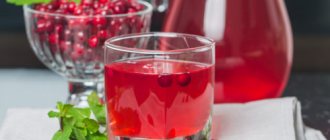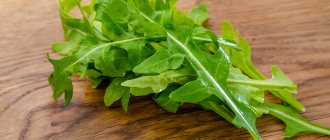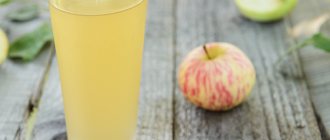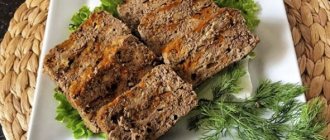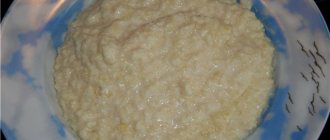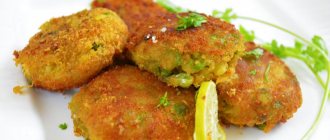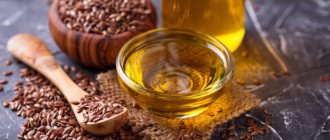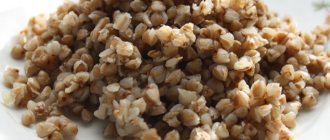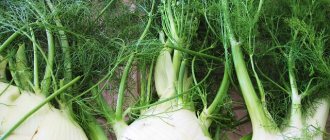Levchuk Victoria© Pumpkin is almost not present in the diet of modern people. Today, pumpkin is associated with the fairy tale Cinderella or Halloween, although some will think of pumpkin pie or pumpkin rice porridge. Pumpkin is a food that can be prepared and eaten in many different ways. Pumpkin complementary food is a bright and sweet baby food that allows you to introduce colors and diversify the texture and taste of your baby. Its consumption has various benefits for improving overall health, and therefore this vegetable should not be excluded from the baby’s diet.
Useful to cook!
- Quinoa and pumpkin porridge;
- Pumpkin-apple juice;
- Pumpkin puree soup.
Below is a list of all recipes on the Encyclopedia Baby Food website or go to the Recipes section.
It is convenient to use the Encyclopedia Baby Food site map with a list of all articles and recipes.
Types of pumpkin
Table of contents:
In our country, orange pumpkin is mainly consumed, but depending on the different types, it can come in various colors, shapes and sizes, such as orange, yellow, white, green and others, spherical, cylindrical or pear-shaped, sizes from smallest to gigantic. The most common Russian types are nutmeg, large-fruited, hard-bark pumpkins. It is best to use the nutmeg variety for feeding children pumpkin, as it is considered the most delicious and vitamin-rich variety.
Cooking pumpkin for a child
- Wash the vegetable thoroughly, remove the peel and seeds.
- Cut the pumpkin into cubes.
- Place on a baking sheet or in a saucepan.
- Fill with water to completely cover the vegetables.
- After boiling, cook over low heat for an average of 15 minutes.
(Bake in the oven for approximately 20 minutes).
- The finished dish must be chopped in a way convenient for you until a homogeneous mass is obtained.
- Cool and give to the child warm.
So you have become acquainted with how to introduce pumpkin complementary foods into the children's menu. I advise you to follow all rules and recommendations for the use of this product. Then you can be completely confident in the success of introducing pumpkin and you will know that the baby is receiving the nutrients in full. At the same time, the baby strengthens its body and improves its vital processes.
Pumpkin history
The word "pumpkin" comes from the Greek "pepõn", which means "large melon". The word was gradually formed from the French - “Ponpon”, from the English - “Pumpion”, then renamed to “pumpkin”.
Pumpkin was one of many foods used by the native Indians in the Americas and was an unexpected discovery for the Pilgrims. The Indians beat strips of pumpkin, dried them, made floor mats and then sold them.
Although it is difficult to call only America the birthplace of pumpkin, some scientists name countries such as northern Africa, China and even India.
This vegetable appeared in Rus' at the end of the 16th century, and gained particular popularity among peasants.
Benefits of feeding pumpkin
In children's nutrition, experts place pumpkin on the same level as zucchini and broccoli and recognize it as an important product in a child's diet. Pumpkin has an intense color, indicating its high content of beta-carotene, which is converted into vitamin A. Pumpkin is also an excellent source of vitamins B1, B3, B5, B6, C. It is rich in magnesium, potassium and fiber, Omega-3 fatty acids and complex carbohydrates such as starch. The most important reason for introducing pumpkin into complementary foods is the presence in its composition of rare vitamins K and T, which are found only in this vegetable.
The vegetable stimulates the digestive system, and the fibrous structure of the pumpkin prevents constipation in the child.
It has a beneficial effect on bones and muscle structure, the gastrointestinal tract and vision.
Prevents the development of anemia, pumpkin contains more iron than apples.
Improves sleep.
Increases the body's resistance.
Strengthens the immune system.
Pumpkin contains potassium salts essential for excellent cardiac and vascular function. Pumpkin seeds are a natural source of phytosterols. Phytosterols can lower both total cholesterol and bad cholesterol (LDL) by inhibiting the absorption of dietary cholesterol. It is also a good source of zinc and polyunsaturated fatty acids.
Pumpkin is a rich source of fiber. Fiber quickly fills the body, so your child can eat less and thus consume fewer calories.
B-carotene reduces sun damage to the skin and acts as an anti-inflammatory agent. In addition, α-carotene slows down the aging process and delays the appearance of wrinkles on the skin.
Pumpkin seeds are a rich source of the amino acid tryptophan, which is important for the production of serotonin, a hormone responsible for improving mood. A handful of pumpkin seeds can help in boosting your mood.
Pumpkin prevents and helps control diabetes. The ingredients in pumpkin and its seeds provide excellent assistance in the absorption of glucose in the blood and help balance glucose levels in the liver.
About the benefits
Pumpkin is a vegetable typical of our region, so it is well digested even by the smallest. Compared to its “colleagues”, it has a very wide spectrum of action and is enriched with many elements, including:
- Iron, phosphorus, potassium, calcium, magnesium.
- B vitamins.
- Ascorbic acid.
- Vitamin E.
- Beta-carotene.
And that's not all, but only basic vitamins and minerals. Based on this list, we can highlight the following areas of beneficial effects of pumpkin for a baby.
- Has a beneficial effect on the development of the skeletal and muscular systems.
- Magnesium has a positive effect on the nervous system, relieves muscle tone, and promotes sound sleep.
- Vitamin C strengthens the immune system.
- Potassium is necessary for the full functioning of the cardiovascular system.
- Iron prevents the development of anemia and anemia.
- A large amount of fiber promotes gastrointestinal health.
- Beta-carotene is beneficial for the baby's visual system.
It should also be noted that pumpkin puree for babies is easily digestible, it contains a lot of water and fiber, so the product can be called dietary. With all the benefits, the vegetable has almost no contraindications. The only thing you should pay attention to is that pumpkin increases the amount of bilirubin in the blood, that is, it can cause jaundice. However, this phenomenon can only be observed when the product is overeated.
Introduction to Pumpkin Weaning
Pumpkin feeding should begin at approximately 6-7 months of age. The orange color of the product is a natural sign that a child may develop an allergy to the product, so most pediatricians advise adding this vegetable to the child’s diet later. To begin with, introduce zucchini, broccoli and cauliflower into complementary foods, and only then pumpkin. The rule of waiting 4-7 days with this vegetable must be carefully observed, since this is the first colored product in the baby's complementary feeding. It is better if pumpkin complementary foods are introduced closer to 7 months. However, it must be borne in mind that the risk of developing an allergy to pumpkin is much lower than to carrots or citrus fruits. We just advise you to be careful, but do not give up the vegetable as the benefits are too attractive.
Pumpkin is a rich source of essential nutrients for baby's well-being, strengthening the immune system, protecting against worms, antioxidants and antimicrobial properties.
Pumpkin seeds can also be introduced into a child's complementary foods, as allergies are rarely caused by them. They can be introduced to a child at 10 months in a form that eliminates the risk of choking (i.e. the crushed form). Whole seeds are given to children aged 1.5 to 2 years. At this age, the child has strong teeth to chew well, and he is already on a general adult diet.
Pumpkin complementary foods are introduced as a regular vegetable, i.e. We gradually bring it up to the required norm in grams, based on the child’s age, and look at the complementary feeding schedule. Next, you can give pumpkin, if every day, then no more than 30 grams, here the rule is the same as with carrots. If you plan to give pumpkin 1-2 times a week, then 100-150 grams at a time, again depending on the age of the child and the portion eaten.
When can it be introduced into complementary foods?
Which formula to choose for a newborn with mixed feeding
Many parents wonder from how many months old can they give pumpkin to their baby. Puree from this vegetable can be added to the diet when the baby is 7 months old. It is not at all difficult to accustom your baby to this product: you need to act by analogy with how other vegetables were introduced into complementary foods. However, certain nuances are still present.
At the initial stages, the amount of food per feeding should be very small - about half or a third of a teaspoon. Quite often, infants spit out the orange vegetable because they find it tasteless. In this case, you should try again. If the baby has taken puree, feeding should be stopped for 2-3 days. During this time, you should observe the behavior and well-being of the baby. If the baby does not have any problems with digestion, redness or rashes on the skin do not appear, then puree can be safely introduced into complementary foods.
The process of adding pumpkin to the standard diet of a newborn must comply with the following rules:
- The vegetable is given in the morning or before lunch.
- At first, the puree is given in its pure form (without adding anything or mixing with anything).
- Complementary foods are introduced gradually and the baby's condition is monitored.
- Do not give the product if the child is sick or has been vaccinated.
Child is allergic to pumpkin
Pumpkin complementary foods are vegetables that can cause an allergic reaction in a child, since the product contains a lot of carotene and a unique f225 protein. An allergic reaction to pumpkin is standard in the form of a small rash on any part of the body, unpleasant itching, swelling of the nose and throat. It is necessary to take into account that an allergy to pumpkin may not appear immediately, but within about a week, so it is so important to keep a child’s food diary in order to track the reaction to the product and exclude it from complementary foods.
Useful properties and contraindications of pumpkin
Useful properties of pumpkin for the human body:
- Contains a large amount of vitamins and microelements (vitamins B, C, D, calcium, iron and others), which contribute to rapid and proper growth and development.
- Pumpkin and other orange fruits contain beta-carotene. Carotene is especially useful for vision, as well as for bones.
- The pectin contained in pumpkin successfully removes harmful toxins from the body.
- Pumpkin is rich in iron, which, when consumed regularly, prevents the development of iron deficiency anemia in a child.
- Thanks to the fiber content, the functioning of the digestive system is improved and constipation is prevented.
- Experts say that pumpkin contains various microelements that have a beneficial effect on the human nervous system, improving sleep.
- Pumpkin for complementary feeding is a low-calorie vegetable, which is especially important if the child is overweight.
And yet, even this wonderful vegetable has contraindications for consumption:
- Product intolerance. Pumpkin can cause allergies in children due to its high carotene content. Therefore, pumpkin complementary foods should be introduced gradually and carefully.
- Eating pumpkin in large quantities can cause so-called carotene jaundice in a child.
- Pumpkin is not recommended for consumption by children suffering from diabetes or hepatitis.
- Dishes made from fresh pumpkin fruit that is not subject to heat treatment can aggravate gastrointestinal diseases in the baby.
In what form should you give pumpkin?
At the age of 6-7 months, pumpkin complementary foods are introduced in the form of a one-component puree. Pumpkin juice can be given to a child after 12 months, pumpkin seeds can be given from 10 months. It can be combined with other fruits, vegetables, and meat as new products are introduced into the child’s diet.
There are countless ways to introduce pumpkin to your baby after introducing him to solid foods. As your baby gets older, you can make pumpkin soup or pumpkin chips (thin slices of pumpkin baked in the oven with olive oil, salt, pepper and various spices such as a little coriander or ginger). In addition, pumpkin can be used as the main ingredient in pie, muffins, and you can also prepare a salad for your child. Finally, we can use it to create incredible homemade jams and sweets.
One of the easiest ideas for preparing pumpkin is to cut it into small pieces, sprinkle it with sugar and cinnamon, and bake it in the oven or pan until done. Accordingly, instead of sugar, you can first pour olive oil and season with salt, various spices, for example, cumin and coriander, and you will get a wonderful side dish for meat. You can cut the pumpkin into thin slices, fry it and add it to the salad. You can also make wonderful pumpkin puree, which goes not only with meat, but also with fish or seafood. Pumpkin makes surprisingly tasty Uzbek pilaf or fruit pilaf. Pumpkin also goes perfectly with potatoes. French-style meat, where there is no potato but pumpkin is present, is also original and tasty.
General characteristics of pumpkin as complementary food
Along with hypoallergenic vegetables, pumpkin is a product that is acceptable for babies at a very early age. It is perfectly digestible and does not irritate the baby’s tummy. Due to its high content of plant fibers, it prevents the formation of constipation. An effective remedy against intestinal problems in babies.
It is known that a lack of B vitamins and microelements disrupts the functioning of the circulatory system. The child becomes irritable, immunity decreases. As a source of vitamin D, pumpkin dishes will help prevent the appearance of rickets. Kids like pumpkin puree, juices, and cereals due to their special sweetish, very pleasant taste.
Pumpkin has a number of contraindications:
- special cases of pumpkin intolerance in children;
- diagnosed with diabetes mellitus of any type or hepatitis;
- stomach diseases. Before starting complementary feeding, take the advice of your pediatrician;
- frequent consumption of pumpkin provokes the development of jaundice;
- allergies caused by the presence of carotene.
Pumpkin should be excluded from the baby’s diet if symptoms appear:
- the skin turns red and a rash appears;
- the child began to have coughing attacks and a severe runny nose;
- the baby behaves restlessly, is capricious for no reason;
- temperature rise above normal values;
- stool disorder.
Such symptoms indicate that you need to exclude dishes with pumpkin. After a couple of weeks, try again to introduce pumpkin; give pumpkin supplements in small portions.
How to choose a pumpkin for complementary feeding
When purchasing a whole pumpkin, you need to pay attention to the absence of signs of impacts, cuts and other damage, as well as signs of rotting. It is believed that the brighter the color of the pumpkin, the sweeter it is. The stalk should be dry, a sign of a ripe pumpkin. When tapping a vegetable, a dull sound is heard. The pumpkin skin should be firm and not pressed through. If you buy part of a pumpkin, then you need to pay attention to the seeds, which should be hard and ripe; the presence of empty seeds indicates the immaturity of the vegetable. And the pumpkin itself or its cut should look juicy and “alive”, as if it had just been cut.
At what age can you start giving your child pumpkin and how to do it correctly?
The main advantage of ready-made baby pumpkin puree is simply saving time on preparation. You have no guarantee that the product is of the required quality, and that the additional ingredients added are suitable for the baby. There is a risk of getting more sugar than the pediatrician advised to give the child. The presence of preservatives cannot be ruled out. Some manufacturers add dyes to give the food an attractive appearance.
If you need to buy pumpkin puree or other vegetables, carefully read the composition of the product indicated on the package label. The presence of two ingredients is acceptable - pumpkin and water. Try the texture and smell of the finished puree. They should be as close as possible to the sensations that you experienced when preparing the product yourself.
Choosing pumpkin as complementary food
The pumpkin has absorbed the colors of autumn. The bright vegetable is allowed for young children as their first complementary food - a nutritious and healthy product. Contains a minimum amount of calories, a whole sea of microelements valuable for the baby's body.
The color and shape of pumpkins vary. There are round and oblong specimens. The color of the fruit includes the entire spectrum of orange and greenish shades.
Let's try to choose the right pumpkin. Of course, the best option is if you grew it on your own summer cottage. Compliance with the rules of agricultural technology will allow you to grow a pumpkin that does not contain nitrates, nitrites, and other harmful substances. Unfortunately, not everyone has this opportunity. Rules that will help you buy a quality pumpkin at the market or in a store:
- medium-sized fruits - within four kilograms;
- absence of any signs of rotting or damage;
- As when choosing a watermelon, look for specimens with a dry tail;
- A high-quality pumpkin has a thick, brightly colored skin.
Advice! Don't buy cut pumpkin. Firstly, the cut pumpkin may have been stored in improper conditions. All conditions for the proliferation of pathogenic microorganisms have been created on the surface of the cut product. Secondly, if the fruit was cut in front of you, there could be bacteria on the knife.
Contraindications
Many kids like this sweet, tasty, aromatic vegetable, but you shouldn’t overuse it. Pumpkin contains the same amount of carotene as carrots. Excess carotene leads to allergic reactions. Pumpkin is dangerous for diabetics because it is rich in carbohydrates and sugars. People suffering from stomach and duodenal ulcers should also refrain from eating pumpkin.
It is not recommended to eat pumpkin raw if the place and method of its growth are unknown. Excessive consumption of this vegetable will please the child with a yellow skin color.
How is pumpkin good for children?
Pumpkin is not only a tasty addition to the diet, but also a storehouse of vitamins and minerals.
General information
Common pumpkin - quite common in Russia
Pumpkin is a widely known herbaceous plant in Russia, the fruit of which, pumpkin, is used as food and feed for domestic animals. As a rule, ordinary (or kitchen) pumpkin is grown in central Russia; it is its fruits that we know as a tasty and healthy product.
The pumpkin fruit consists of the following parts:
- 75% - pulp;
- 15% - hard skin (it is not eaten or used for medicinal purposes);
- 10% - seeds.
Nutritional value of 100 g of pumpkin pulp: 1 g of protein, 1 g of fat, 4.4 g of carbohydrates, 91.8 g of water, calorie content - 22 kcal.
The enormous benefits of pumpkin are due to its diverse composition.
Table: components that make up pumpkin and their beneficial effects on the human body
| Component | Role in the human body | |
| Vitamins | WITH | Well-known immunostimulant. |
| T | A rare vitamin that promotes the absorption of heavy foods and also prevents anemia. | |
| TO | Vitamin that stimulates blood clotting. It is also known as an effective poison neutralizer. | |
| A | Antioxidant, good for vision, skin and hair, strengthens the immune system. | |
| D | “Sunshine” vitamin regulates the absorption of calcium and phosphorus. A must for children under three years of age during the winter. | |
| E | Vitamin of “youth and beauty”. Improves tissue respiration, blood circulation, strengthens the immune system. | |
| F | Improves skin condition, prevents blood clots. | |
| PP | The second name is nicotinic acid. Participates in fat metabolism, redox processes, and has a beneficial effect on the gastrointestinal tract. | |
| IN | B vitamins optimize the functioning of the nervous system. | |
| Macro- and microelements | Iron | A direct participant in the process of creating hemoglobin, and therefore supplying the body with oxygen. |
| Potassium | An indispensable builder of soft tissues of the human body. | |
| Calcium | The most important component of bone tissue. | |
| Magnesium | Participates in all life processes of the body. | |
| Copper | Maintains normal blood composition. | |
| Phosphorus | A component of bone tissue, it supports kidney health and participates in metabolic processes. | |
| Cobalt | Necessary for the normal functioning of the pancreas, participates in the creation of red blood cells. | |
| Carotene | Precursor of vitamin A. Antioxidant, immunostimulant. Carotene is present in higher concentrations in pumpkin than even in carrots. | |
| Cellulose | Coarse plant fibers help cleanse the intestines, thereby improving digestion processes and normalizing intestinal function. | |
| Plant sugars | Natural sugar substitutes with a gentler effect on the body and a low glycemic index. | |
| Pectins | They improve metabolism by participating in metabolic processes, reduce cholesterol levels, improve blood circulation, and eliminate intestinal dysbiosis. | |
Beneficial features
Pumpkin is especially useful for babies, which is why it is recommended to include it in the diet of children under one year old.
In general, regularly eating pumpkin is good for your baby for a number of reasons:
- Thanks to the immunostimulating properties of several of its components, pumpkin is useful for the prevention of various infectious diseases.
- Constantly eating pumpkin can protect your child from anemia (iron deficiency).
- Pumpkin has a diuretic and choleretic effect.
- One hundred grams of pumpkin contains the daily requirement of beta-carotene for children, which means that the product not only helps maintain healthy vision, but also strengthens the immune system.
- Pumpkin is good for hyperactive children - it has calming properties.
- Pumpkin improves the functioning of the digestive tract: reduces stomach acidity, cleanses the intestines, and effectively and quickly helps with constipation.
- Pumpkin is a low-calorie product, this property is especially important for overweight children.
- Pumpkin seeds contain an amino acid (cucurbitin), which is harmless to the child’s body, but very dangerous for helminths, which makes it possible to effectively combat helminthic infestation.
Clinical studies have shown the amazing properties of Chinese bitter gourd. As it turned out, this product effectively fights pancreatic cancer, as well as HIV infection.
Age characteristics
Pumpkin puree is included in the diet immediately after the baby has mastered the first row of vegetables.
Depending on the method of preparing pumpkin, as well as on the option of feeding the child (breast or bottle-feeding) used by the mother, the timing of its introduction into the diet of this age varies somewhat.
You should not give your baby pumpkin too often (daily). Too much vitamin A and carotene can cause skin discoloration (yellowing). The best option is twice a week.
Table: rules for introducing pumpkin as complementary food for infants
| Method for preparing pumpkin | Age at which you can offer your baby a dish | Volumes |
| pumpkin juice | From 4 months (after the introduction of fruit juices - apple, pear, apricot, etc.) | You should start with half a teaspoon. By the age of one, you can give up to 100 ml of juice per day. A freshly squeezed product is not suitable for introducing pumpkin juice into the diet; it is recommended to use heat-treated ones. |
| Pumpkin puree | On artificial feeding - no earlier than 5 months, on breastfeeding - no earlier than 6-7 months (after introducing first-row vegetables into the diet - zucchini, potatoes, cauliflower, carrots). | Begin the introduction of pumpkin according to the general rules for starting complementary feeding - half a teaspoon, gradually increasing the volume. By one year, the daily volume of pumpkin puree can reach 200 g. |
| Porridge with pumpkin | From 7 months. | You can add a little pumpkin puree or juice to the porridge. However, if the child has not eaten pumpkin before, you need to start according to the rules for introducing complementary foods - with half a teaspoon. |
| Pumpkin soups | From 8 months. | Pumpkin soups are introduced after the baby has successfully introduced himself to pumpkin. In terms of the amount of this vegetable in the soup, you should focus on the age norms for consuming pumpkin puree. |
Pumpkin seeds are not recommended for children under three years of age.
Video: pumpkin in a baby’s diet
How to prepare pumpkin complementary food?
Traditionally, the child is offered one-ingredient pumpkin puree. It can be prepared from fresh or frozen product. It all depends on the season. You can prepare pumpkin for complementary feeding in a slow cooker, a double boiler, in a regular saucepan over heat, in the oven, or in the microwave.
Remember that pumpkin tends to lose its nutritional value when cooked for a long time. Baking weaning pumpkins will ensure that most of the nutrients are retained for your baby.
Pumpkin should be cooked immediately after it is cut. After cooking, pumpkin puree should be used or refrigerated immediately.
way to cook pumpkin
If you prepare baked goods from pumpkin, you must take into account that the product is watery; if exposed to air for a long time, especially with sugar, such a dish will take a long time to bake or will not bake at all. Therefore, when I make pumpkin muffins, I put the chopped pumpkin into the prepared dough so that I can put everything in the oven in 10 minutes. And the most important thing is to add baking powder at the very end, a couple of minutes before baking.
Porridge with pumpkin
Millet
To prepare millet porridge, grate 100 g of peeled and seeded pumpkin. Boil a glass of milk, pour a tablespoon of millet into it and cook with constant stirring for 10 minutes, then add the grated pumpkin. Continue cooking until thickened, let the porridge cool slightly, and season with honey and butter before serving.
Manna
Cut 300 g of pumpkin, peeled and seeded, into cubes. Putting it in a saucepan, pour 340 ml of milk into it, bring to a boil and cook until soft. Dissolve two tablespoons of semolina in half a glass of water. While continuously stirring the pumpkin boiling in milk, slowly pour the semolina into the saucepan. Salt and add sugar to taste. Cook until the porridge becomes thick enough. At the end of cooking, you can add chopped dried fruits, such as raisins and prunes.
pumpkin juice
Pumpkin juice can be given to a child after 12 months. However, the juice must be prepared, i.e. boil. You can take pumpkin puree and dilute it with boiled water, you get wonderful juice with pulp. Juice from raw pumpkin should not be given to a child under 3 years of age. After introducing citrus fruits into your baby’s diet, you can add lemon or orange juice to the pumpkin juice for a richer taste. You can combine pumpkin juice with other fruit juices, namely apple, pear, peach, etc.
How often can you serve pumpkin dishes?
Many parents believe that if a product is useful, then it should be given to their child as often as possible. However, this is completely wrong. And such concern can lead to unpleasant consequences. Dishes containing pumpkin should be present in the baby’s diet no more than 2 times a week. This is enough for the normal development of the baby.
If the child suffers from regular constipation, then pumpkin purees can be increased to 3-4 times a week. The fiber content in this vegetable allows you to normalize your baby's stool.
Raw pumpkin feeding
The raw, unprocessed product contains significantly more useful vitamins and elements, but it is much more difficult for a baby to chew and then digest the rather rough texture of raw pumpkin, so you should refrain from consuming it until the age of 3. After 3 years, offer your baby raw pumpkin, grated or as part of fresh fruit salads.
Pumpkin in baby food.
Freezing
Complementary feeding is not difficult to prepare, the main problem is that it is done in small quantities. And it’s difficult to preserve a cut pumpkin for more than 3 days; the only way out is to freeze it. This way it will retain all its beneficial properties for several months.
To freeze, you can cut the pumpkin into portions and wrap it in cling film and place it in the freezer. But it’s better to freeze in small cubes so that you can cook right away, without pre-cutting. To do this, the pumpkin is peeled, cut into pieces, laid out on a board and sent to the freezer. Then the slices are poured into a bag. They do not stick together and it is easy to take the right amount for preparing complementary foods.
If you have prepared more puree than you need for complementary feeding, you can also freeze it and then add it to the porridge when cooking or reheat it. It is convenient to freeze the finished puree in plastic cups: you get cubes that are easy to take out and pour into a bag.
Freezing mixed vegetables is also a great option. Along with the pumpkin, carrots, zucchini, and broccoli are cut into cubes and placed in the chamber. Please note that carrots need to be cooked longer, so you need to cut them into smaller slices. Vegetables can be frozen individually or made into a mixture. In winter, they can be used to make puree, and as the baby grows up, a vegetable stew with the addition of meat and fish.
Feeding a newborn usually starts with zucchini or broccoli, but pumpkin is a vegetable that is also allowed in early complementary feeding.
What beneficial substances are there in pumpkin?
The benefits of pumpkin for a child are difficult to overestimate. This vegetable contains a huge amount of vitamins and elements useful to a growing body.
First of all,
B
vitamins ; there are also vitamins A (carotene, which has a positive effect on vision) and PP.
Of the microelements, pumpkin contains almost everything: iron, zinc, potassium, calcium, phosphorus, copper, magnesium, fluorine, sulfur, etc.
All this makes pumpkin very useful for strengthening and developing the immune system and stabilizing digestion.
The beneficial substances in pumpkin stabilize digestion, strengthen the walls of blood vessels and have an overall positive effect on the cardiovascular system of a person, in particular a child.
Pumpkin is an excellent antidepressant; its use can improve sleep and “calm down” an overly active baby.
At what age can you give your child pumpkin?
Since this vegetable is considered one of the most useful and easily digestible, pediatricians allow it to be given from seven months.
For the first time, a serving of pumpkin should be no more than 30 grams.
After a year, your baby can already be given 50 grams or more of pumpkin at a time.
Freezing pumpkin
Pumpkin complementary foods can be frozen. Usually, a whole pumpkin can be stored well for a long time, but if it is cut into pieces, it will last no more than 7 days in the refrigerator. Therefore, the pumpkin must be washed, cut into small pieces, dried, put in bags and placed in the freezer for quick freezing.
Pumpkin freezes well. The finished pumpkin will turn into a brownish orange, so don't worry about it.
When freezing, be sure to leave some room at the top of the container or freeze it in a bag, as the pumpkin may expand as it freezes.
Pumpkin may appear split when thawed due to air bubbles, so pumpkin pieces are usually used only for making porridge or pumpkin puree. This will not affect the quality or taste of the pumpkin.
Pumpkin puree can be frozen in containers, ice cube trays, or ziplock bags.
Frozen pumpkin in pieces can be stored in the freezer for 8 to 12 months; pumpkin puree can be stored for no more than 3 months.
Pumpkin storage
Store whole pumpkin in a cool, dry place, out of direct sunlight. If the integrity of the fruit is compromised, it must be hermetically wrapped in cling film and stored in a cool place.
This vegetable can also be cut into desired portions and stored in the freezer. Before cooking, the product is defrosted and ready for heat treatment.
